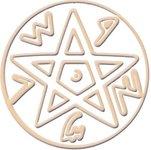
Professor of prehistoric archaeology at the Institute of Archaeology and the head of the Computational Archaeology Laboratory.
Research Interests
- The transition from a hunting and gathering economic base to food production
- Prehistoric burial customs: the appearance of cemeteries in prehistoric settlements
- Aspects of Epi-Paleolithic flint technology
- Rock Cup-Marks Function and Context
- Study of the characteristic patterns of Post Depositional Damage of flint
- Development of mathematical and computational methods to assist in archaeological research: computer simulations, 3D technology (at the Computational Archaeology lab).
Teaching
Beginnings of Civilization; Computational Archaeology and 3D; The Origins of Agriculture: Levant, America and China; Transitional periods in Prehistory; Human Prehistory; Levantine Upper Palaeolithic and Epipalaeolithic Entities; Scientific Topics in Archaeology; Research of Human Prehistory in the 21st Century; Modern Human expansion to Europe; Introduction to Prehistoric Archaeology; Field Archaeology; Developments of prehistoric closed spaces to the Neolithic house; Beginning of Agriculture; GeoArchaeology.
Ongoing projects
- Nahal Ein Gev II (2010 – present): A Natufian village site with a complex plan and massive architecture dated to about 12,000 years ago. Its period of occupation overlaps the time-span of the Natufian-Neolithic transition. Our aims are to investigate cultural, technological and subsistence changes at the end of the Natufian while trying to understand the life of the site’s community. In the recent excavation seasons we exposed numerous architectural features, including a large cemetery bounded by a massive wall, a unique phenomenon in the Natufian.
- Nahal Zihor (2017 – present): The early Neolithic site at Nahal Zihor, Arava, includes a rich lithic assemblage and architectural remains, suggesting a task specific site in the desert, about 11,000 years ago.
- Ein Gev IV (2016 – present): A large Early Epipaleolthic Nizzanan site that sheds new light on its role within the wider frame of the Epipalaeolithic settlement in the area (Ein Gev I, II, III). In particular, the investigations allow the comparison with other nearby sites attributed to different Epipalaeolithic cultural complexes, especially with the Kebaran dwelling structure discovered at Ein Gev I. The radiometric dating of the retrieved botanical samples will enable us to anchor the site to the absolute chronological frame.
- Burial Practices – The study of the graves at Hayonim cave, Hilazon Tachtit cave and other burial grounds (with Prof. Anna Belfer-Cohen). We are identifying communal burial practices that offer us insights on the specific markers of terminal Paleolithic groups.
- Hilazon Tachtit Cave: The study of the remains from Hilazon Tachtit Cave (excavated 1997-2008), where a 12,000-year-old burial ground was unearthed. The study of this burial ground contributes new data on Natufian ritual activities and thus to current debates on the origins and significance of social and ritual processes during the gradual adoption of new Neolithic lifeways.
- Computational Archaeology: We are constantly developing new features that are integrated in programs designed by us (for analyzing lithics, groundstone tools, bones, cut marks etc.) addressing important archaeological questions (software – Artifact3-D, ArchCut3-D etc.). For example, the understanding of 3-D morphological variability offers the possibilities to reconstruct prehistoric technological and cultural decision-making, as well as the connection between lithic traditions from different areas in the Southern Levant.
Previous projects
- Survey and excavation at Kaizer Hill (2007-2009) and survey at Hatula (2004): Through a study of flint quarries at Hatula and Kaizer hill sites we have identified both the quarrying sites and the artifacts used in the quarrying. It appears that at least some of the Neolithic cup-marks considered in the past as food processing vessels were in fact part of the process of extracting flint nodules from the rock (with Prof. Naama Goren Inbar).
- Survey and excavation at Kramim - Brekhat Manzur site: Survey of a complex of Upper paleolithic sites at the low valley at the eastern foothills of Mt. Kramim, a basaltic plateau of the Golan Heights. A small-scale excavation was carried out in the sections of the road leading to a reservoir known as Brekhaat Manzur. The excavation retrieved an in-situ layer. Initial analysis of the lithic assemblage suggests that the site falls within the typical Levantine Late Upper Paleolithic industries.
Publication List
For the full publication list, please enter the following link
Graduate students
M.A. students
- Michal Kapuller
- Natalia Gubenko (graduated 2021)
- Keren Nebenhaus (graduated 2021)
- Timna Raz (graduated 2021)
- Talia Yashuv (graduated 2021)
- Hadas Goldgeier (graduated 2019)
- Nethanel Paz (graduated 2016)
- Alex Bogdanovsky (graduated 2016)
- Ahiad Ovadia (graduated 2016)
- Efraim Wallach (graduated 2013)
- Noa Klein (graduated 2013)
Ph.D. students
- Natalia Gubenko
- Hadas Goldgeier
- Antoine Muller
- Lena Dubinsky
- Francesco Valletta (graduated 2021)
- Ortal Harush (graduated 2021)
Visiting PhD students – (collaboration projects)
- Roxanne Lebenzon (2019, 2022)
- Shubham Rajak (2022)
- Annie Melton (2021)
- Wenting XIA (2019)
Post-doctoral students
- Dr. Heeli Schechter (2023-2024)
- Dr. Gadi Herzlinger (2021-2024)
- Dr. Francesco Valletta (2022-2023)
- Dr. Marta Modolo (2020-2022)
- Dr. Emily Sarah Hallinan (2020-2022)
- Dr. Laurent Davin (2020-2022)
- Dr. Greg Bergman (2014)
- Dr. Enora Gandon (2011-2013)

